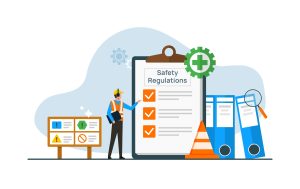How To Avoid Workplace Personal Injuries
 Everyone in the United States has a right to a safe workplace.
Everyone in the United States has a right to a safe workplace.
Although some occupations are inherently more dangerous than others, you shouldn’t have to worry about unexpected hazards in your workplace that you haven’t been trained to manage. If you’ve been injured because of an unsafe condition at work, you don’t have to settle for an apology and empty promises.
The Role of Employers in Providing a Safe Workplace
The federal Occupational Safety and Health Administration (OSHA) establishes general workplace safety rules for most private employers in all 50 states. Under the OSH Act, employers have a “general duty” to provide workers with a safe and healthy workplace. In New York, a modified set of rules applies to state and local government employees.
Although state and federal requirements vary between industries, they typically mandate the following:
1. Employers must provide workers with the training and protective equipment needed to minimize the risk of foreseeable injury;
2. Employers cannot request, instruct, or permit employees to use machinery or equipment that is not in good repair and safe working condition.
3. Employers must perform both routine and reactive maintenance, taking steps to limit foreseeable risks and mitigate existing hazards.
Different industries are subject to different standards, but employers often have some leeway in designing their policies and procedures. For a supermarket or other commercial business, best practices may include cleaning floors on a regular schedule, placing “wet floor” signs to prevent accidents, and proactively addressing employee complaints of unsafe working conditions.
In general, employers are not legally permitted to discipline or terminate an employee who raises a legitimate concern about an unsafe practice or policy.
Common-Sense Tips to Prevent Workplace Injuries
Workplaces remain safe only when employers and employees make a good-faith effort to fulfill their responsibilities and respect the law. Ideally, accident prevention initiatives should include:
1. The performance of regular risk assessments to identify workplace hazards and enact reasonable solutions;
2. Safety training sessions, both for new workers and existing employees. Training can be general, or it may be specific to tasks that are unusually dangerous or require special skills, a license, or accreditation;
3. Providing and using essential workplace safety equipment;
4. Inspecting and repairing defective workplace conditions, including dangerous machinery, structural hazards, and any other hazard that could pose a risk to workers’ physical safety and overall well-being; and
5. Emphasizing communication. Employees and employers can usually learn from one another. Following lawful safety policies helps keep workers safe, while employers often need feedback to ensure that their practices are effective, sensible, and practical.
Since working conditions vary from company to company and industry to industry, no single tip or recommendation can guarantee total safety. However, if you’ve been injured in an avoidable workplace accident that was not your fault, you could be entitled to significant compensation through a personal injury lawsuit.
A recognized U.S. News & World Report Best Law Firm, the Dietrich Law Firm P.C. knows what it takes to hold negligent co-workers, managers, and employers accountable for their misconduct—and we have the results to prove it.
 Buffalo Personal Injury Lawyer News
Buffalo Personal Injury Lawyer News

